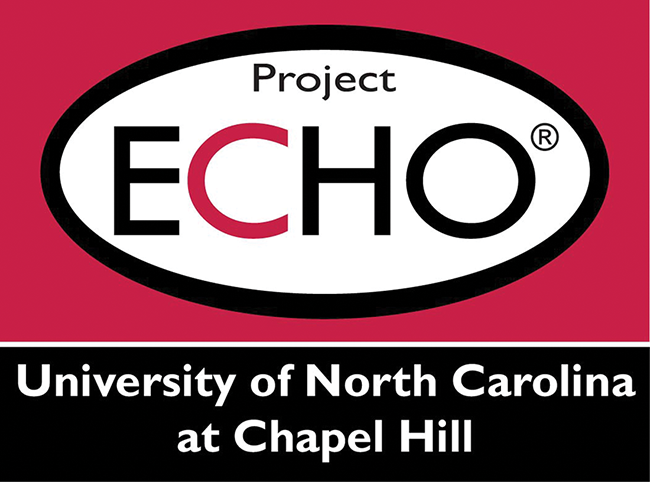UNC Project ECHO
to combat the opioid
epidemic in North
Carolina.
What is MAT?
Medication assisted treatment (MAT) integrates behavioral health and social services interventions with treatment using an FDA-approved medication for opioid addiction. There are three medications used in MAT: buprenorphine, naltrexone, and methadone. All have been shown to reduce cravings, illicit opioid use, and overdoses. Patients receiving medications as part of their opioid addiction treatment are 75% less likely to die because of their addiction than those not receiving medications.* Integrating opioid addiction treatment into your practice is one way you can personally make a tremendous impact on our state’s opioid epidemic.
While methadone may only be given in designated addiction treatment centers overseen by trained addiction physicians, both buprenorphine and naltrexone can be prescribed by providers of any medical specialty, and in a diverse range of treatment settings. In order to prescribe buprenorphine products, providers are required to obtain a waiver from the DEA and be issued a unique DEA “X” registration number which they can receive after completing an 8 hour training course on MAT for opioid dependency. We offer this required DATA 2000 waiver training in an online format for free.
Do I have to be a physician to provide MAT?
No. Nurse Practitioners and Physician Assistants can also be issued a DEA “X” registration number and prescribe buprenorphine. Naltrexone is not a controlled substance, and it can be prescribed by any medical provider. Nurse Practitioners and Physician Assistants must also complete DATA 2000 waiver training to obtain a DEA “X” registration number.
What if I am not ready to offer MAT?
Our practice coaches can provide you with resources appropriate to whatever stage you find yourself, whether you are just starting to figure out how to incorporate screening patients for addiction disorders in your clinic or you are an experienced MAT provider. We work with each practice to help you build your own roadmap to treatment.
*American Society of Addiction Medicine, 2018

